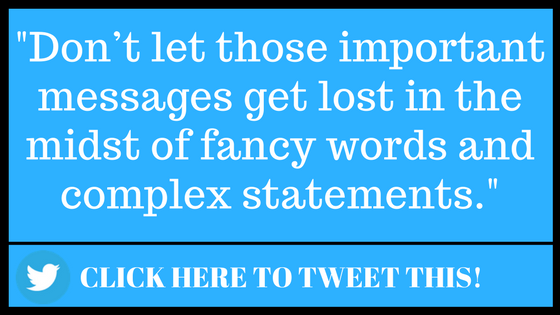Connecting with the various stakeholders in your district’s community is not only one of the most important things you need to do as a school leader, but it is often times also one of the most difficult. Between your faculty, students, parents, and the local community, there are a lot of different people who need different pieces of information, delivered in different ways.
While no two groups of teachers, parents, or community members are the same, and no one will know yours better than you, there are a few things all school leaders should keep in mind while planning communication with stakeholders.
K.I.S.S.
Early on in my career, helping to manage a startup business, I learned an extremely valuable lesson: Keep It Simple Stupid. Now, the “stupid” part was just how we phrased it to have some fun, but the part about keeping it simple…that is huge.
Sometimes we can accidentally take a fairly simple message and clutter it up by over-analyzing and over-complicating the way we share it with others. The key to effective communication is simplicity. Don’t let those important messages get lost in the midst of fancy words and complex statements. Keep it simple and get them clear, concise information.
Focus on the “why.”
I know you’ve had that student look at you (or your teachers) after hearing about the next assignment and say, “why?” Students want to know why they should care about the learning happening in your classroom. Their parents are no different. And if you’re an administrator, neither is your staff for that matter. We all want to know why we need to care about any piece of information we receive. And if we don’t understand why we should care, there’s a good chance we won’t.
Make sure you clearly communicate to all stakeholders why they should read what you send home, participate in that event, or engage with the work their learner is performing. Every time you communicate with stakeholders, you have the opportunity to connect with them and show them that you share their values and beliefs. Make sure they know the “why” behind your decisions, and then back it up with the “what” and “how” of your plans.
It’s not what you say…it’s how you say it.
You may not want to hear this, but people will not remember most of what you share with them. In fact, there’s a good chance they’ll forget more than half of it before they even leave the room, finish reading that email, or get off the phone with you.
What they are more likely to remember is the emotional elements of how you communicated it with them. Your body language, facial expressions, and nonverbal cues, as well as the environment in which you share information, and the method by which you share it, make up almost 90% of the message stakeholders will take away from your communication. It’s actually possible that only 10% of what they hear you say will actually come from the words themselves.
That staff meeting you thought went really well the other day, could have came across two completely different ways. Telling your team they should “try to make your lessons more engaging” could have left one teacher thinking, “she’s right, I need to do some research and figure out to make these better” and another saying “I can’t believe she would insult all of us like that!”
It’s all about how you deliver it, and how they receive it, not just the words you use. So the next time you hold a meeting, send an email to all your parents, or share that new methodology with the community, pay close attention to how you share your message, the medium you choose to share it through, and the environment you bring your stakeholders into when sharing. All three are just as, or even more, important as the message itself.

Title image by Dan Brady via Wikimedia Commons


